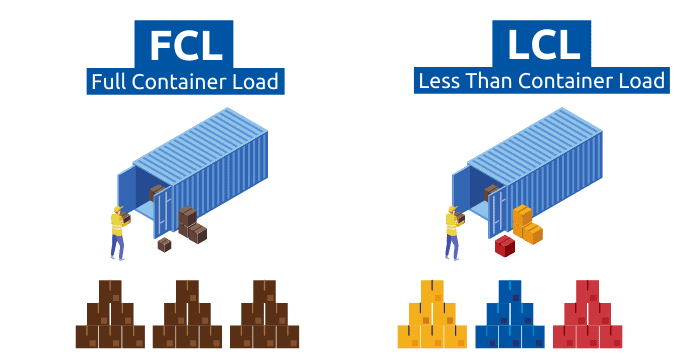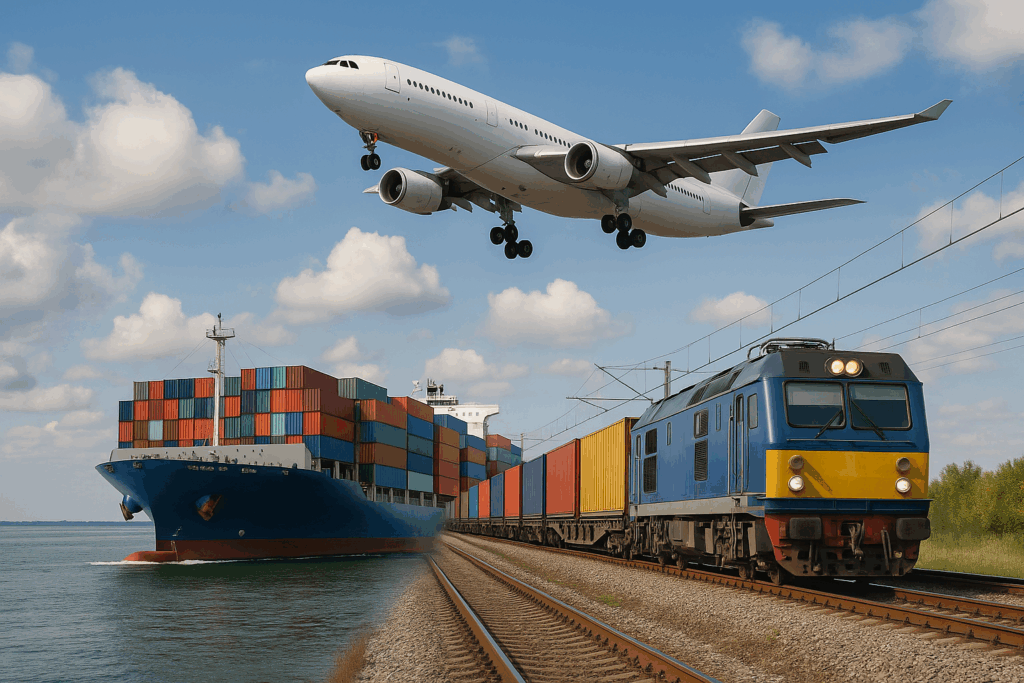The cargo train China Europe network is transforming international logistics. Faster than sea freight and more affordable than air freight, rail shipping provides a balanced solution for cost, speed, and reliability. Companies in electronics, automotive, textiles, and retail now rely on rail freight as a key part of their supply chain strategy.
This guide explains rail freight costs, transit times, customs challenges, insurance, and freight forwarding tips—giving businesses the insights they need to make informed shipping decisions.
1. Why Rail Freight from China to Europe Makes Sense
When choosing between sea, air, and rail freight, businesses need to weigh cost against delivery time.
At a glance:
- Sea freight → cheapest, slowest (30–40 days)
- Air freight → fastest, most expensive (5–7 days)
- Rail freight → balance: 15–20 days, mid-range cost
👉 If your shipment is too valuable for sea but not urgent enough for air, rail is the right choice.
2. How Long Does a Cargo Train from China to Europe Take?
Transit times depend on departure and destination cities:
- Xi’an → Warsaw: ~15 days
- Chongqing → Duisburg: ~16–18 days
- Yiwu → Madrid: ~18–20 days
Even with customs checks at multiple borders, trains usually arrive in under 3 weeks—cutting lead times by 50% compared to ocean shipping.
3. Rail Freight Costs: LCL vs. FCL
Price is a major factor when choosing rail.
| Shipment Type | Cost Estimate | Best for |
|---|---|---|
| LCL (Less than Container Load) | $250–350 per CBM | Small/medium loads |
| FCL (40ft Container) | $7,000–9,500 per container | High-volume cargo |
Rail is 40–60% cheaper than air while only slightly more costly than sea freight.

4. Major Cargo Train Routes Connecting China and Europe
The Belt and Road Initiative has expanded rail connections dramatically. Popular routes include:
- Chongqing – Duisburg (Germany)
- Wuhan – Hamburg (Germany)
- Yiwu – Madrid (Spain)
- Xi’an – Warsaw (Poland)
These hubs link to inland distribution centers, streamlining last-mile delivery across Europe.
5. Is LCL Rail Shipping Worth It?
For businesses without enough cargo to fill a container, LCL rail freight is practical.
✅ Cost-sharing lowers expenses
✅ Allows market testing with small shipments
⚠️ Slightly longer lead time due to cargo consolidation
6. When FCL Rail Freight Becomes More Profitable
Companies shipping machinery, auto parts, or bulk textiles often find FCL more cost-efficient. Once your shipment exceeds 15–18 CBM, a 40ft container is usually cheaper per unit than LCL.
7. Customs Clearance Across Multiple Borders
Unlike sea shipments that clear customs once, rail freight often passes through Russia, Kazakhstan, Belarus, and the EU. To avoid costly delays:
- Prepare commercial invoices & packing lists
- Use correct HS codes
- Include certificates of origin
- Work with experienced customs brokers

8. Insurance & Risk Management for Rail Cargo
Although secure, risks exist: theft, weather delays, and rail congestion. Protect your goods by:
- Taking all-risk cargo insurance
- Using sturdy, export-grade packaging
- Partnering with reliable freight forwarders offering shipment tracking
9. What Types of Goods Are Best for Rail Freight?
Cargo train shipping is best suited for:
- Electronics & consumer goods
- Automotive parts
- Retail & fashion
- Industrial machinery
It is less suitable for low-value bulk goods (better by sea) or highly perishable products (better by air).
10. How to Select the Best Freight Forwarder for Rail Shipping
Choosing the wrong partner can cost time and money. A good forwarder provides:
- Door-to-door delivery across continents
- Flexible LCL & FCL solutions
- Transparent cost breakdowns
- Real-time shipment tracking
11.Conclusion
The cargo train China Europe corridor is a powerful logistics option for companies needing faster delivery than sea freight and lower costs than air freight. With growing infrastructure, stable schedules, and reduced transit times, rail freight is becoming the preferred middle-ground solution for international trade.
Request a Quote
Need a tailored solution for your shipping from China?
Let TJ China Freight Forwarder assist you with reliable, cost-effective service.
FAQ:
Q1.How much does rail freight cost from China to Europe?
On average, $250–350 per CBM for LCL and $7,000–9,500 per 40ft FCL container, depending on route and season.
Q2.How long does cargo train shipping take?
Typically 15–20 days, depending on route and border traffic.
Q3.Is cargo train shipping reliable?
Yes. Trains operate on fixed schedules, making them more predictable than ocean shipping.
Q4.Can refrigerated goods be shipped by rail?
Yes, reefer containers are available, but air freight remains safer for sensitive perishables.
Q5.What documents are required?
You’ll need a commercial invoice, packing list, waybill (CIM/SMGS), certificate of origin, and HS codes.

